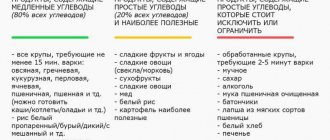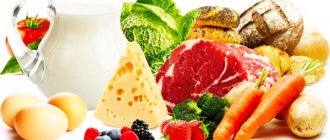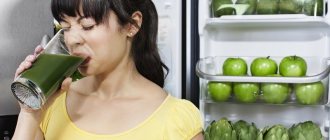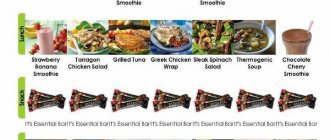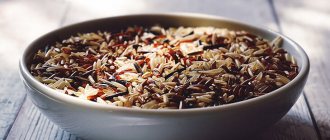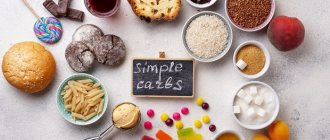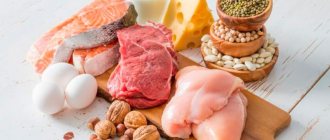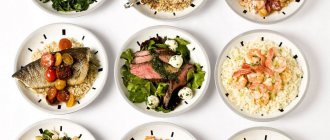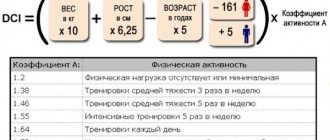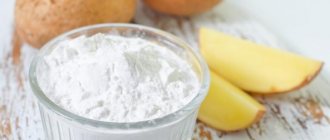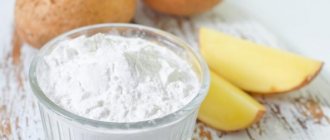A complete diet must include every variety of essential and daily essential nutrients. These are macronutrients (carbohydrates with fats, proteins) and micronutrients, which include vitamins and minerals. One of the additional, but no less important components is fiber.
If you want to maintain and improve your health, then you need to eat a high-quality and varied diet. Nutrition is a key aspect in the prevention of many diseases and the formation of good immunity. We offer you a detailed list of products recommended for proper nutrition for a healthy lifestyle.
What foods should be in the refrigerator for proper nutrition?
A tasty and healthy dietary table is not a myth at all, but a reality. Today, you don’t have to be on a mono-diet to lose excess weight. The healthy and tasty selection of products is so diverse that you can create your own menu based on your preferences. So, what are they, the necessary products for proper nutrition?
- Meat products. The list of healthy foods, of course, includes meat. Unfortunately, plant protein does not contain all the amino acids the body needs that are found in animal protein, so meat must be on your table.
Here we are talking about the most dietary and healthy varieties of meat: chicken, turkey, rabbit, veal, lean beef.These are the foods that are best to always have in your refrigerator to quickly prepare dinner, especially since chicken and turkey, for example, cook quite quickly. A great way is to keep several already boiled chicken breasts in the refrigerator. So, by supplementing the meat with vegetables, you will get an excellent dinner or lunch.
- Fish and seafood. PP products for weight loss cannot do without fish and seafood. Firstly, fish is a source of healthy fats, and secondly, fish is considered a lean dish and contains a huge amount of protein. What you need to pay attention to: salmon, trout, salmon, pink salmon, tuna, halibut, hake, pike perch, lobster, shrimp.
- It is impossible to imagine a list of dietary products without dairy products. When we talk about milk and supplements, first of all we mean dietary fermented milk products, which are low in fat, but at the same time extremely beneficial for our health.
What you should always have in your refrigerator: kefir, natural yogurt, cottage cheese, cheese, yogurt, fermented baked milk.People often try to buy fermented milk products labeled 0%-1% fat, trying to cut down on the number of calories they consume. However, we categorically do not recommend eating completely low-fat foods, since they contain many different synthetic additives and stabilizers, and even trans fats. Moreover, such products do not help satiate our body in any way, and sometimes even cause an even greater feeling of hunger. Try to choose an average percentage of fat content, for example, cottage cheese - 5%-9% fat content, natural yogurt - 3.2%-4% fat content, kefir - 2.5% fat content.
You can choose from cheeses: feta (5%-15%), ricotta (13%), low-fat Oltermani cheese (16%-17%), mozzarella (23%), chechil (5%-10%). In general, it is believed that the usual fat content of cheese is from 40% to 50%, light - from 20% to 30%, low-fat - less than 20%.
- Eggs are included in the mandatory list of dietary products. True, here it is better not to overuse the yolks, but to focus on the whites.
- Vegetables and greens. It’s hard to imagine PP products for weight loss without a rich variety of greens and vegetables. The choice here is truly huge: cabbage (white cabbage, red broccoli, cauliflower, Brussels sprouts, Savoy sprouts, kohlrabi, Peking cabbage, Chinese cabbage, kale), peppers, tomatoes, carrots, eggplants, beets, celery, cucumbers, onions and garlic, radishes, radishes , turnip, pumpkin, zucchini, asparagus, atrishok, dill, parsley, squash, green peas.
Also, we should not forget about the huge selection of greens, which you can eat without any twinges of conscience due to their extremely low calorie content. Here are the top most popular types of lettuce: romaine, arugula, spinach, lettuce, iceberg, frisee, batavia, sorrel.Let your refrigerator have as many vegetables and herbs as possible, then the risk of eating junk food will be minimized.
- Fruits and berries. Make sure that there are always fruits and berries in your refrigerator, then the temptation to eat sweets will be much less!
What to look for: apples, grapefruits, oranges, pineapples, avocados, mangoes, kiwis, bananas, peaches, grapes.Some fruits contain a fairly high glycemic index, such as bananas and grapes, but this is not a reason to exclude these fruits from your diet.
Let’s not forget about berries, which are good to eat as snacks (this is especially convenient if you eat by the hour and take snacks with you), as well as dessert!
The choice of berries is huge: blueberries, blueberries, cherries, sweet cherries, strawberries, blackberries, raspberries, cranberries, lingonberries, currants.
- Proper nutrition products are, of course, cereals. Carbohydrates contained in cereals are considered slow, which means that the body will spend more time absorbing them, and you will not feel hungry for a long time.
The top best cereals look like this: buckwheat, oats, quinoa, brown rice, barley.These cereals contain a lot of fiber, and buckwheat and quinoa are leaders in protein content. Try to alternate the use of these cereals in your diet. Cereals not only perfectly satisfy hunger, but also have a positive effect on the functioning of the gastrointestinal tract and improve peristalsis of the body. Speaking of oats, it should be noted that we are not talking about rolled oats, which have been heavily processed and have lost their beneficial nutrients. Choose oats, or at least whole-ground oat flakes!
- Legumes are definitely included in the set of products.
Include in your diet all types of beans (white, red, black, pinto, green beans, moon beans and others), peas, chickpeas, lentils, soybeans, peanuts. - Whole grain bread can be safely included in the list of dietary products. This bread has a higher fiber content and lower calorie content than regular white bread. You can also add various low-calorie cereal breads to your diet, which are convenient to use as a snack. The main thing when choosing such bread is to carefully study the label and make sure that the composition actually contains wholemeal flour.
- When choosing pasta, also pay attention to what types of wheat they are made from. PP allows the consumption of pasta made from durum wheat, which is a slow carbohydrate.
- Dried fruits . Dried fruits will also help you eat properly; they can be used to safely replace sweets and confectionery. Here is a list of the healthiest dried fruits: dried apricots, figs, prunes, raisins, dates, dried apples and pears.>
- Nuts and seeds. Products for PP are nuts and seeds rich in vitamins and nutrients.
Here, look for: almonds, cashews, walnuts, chia seeds, pine nuts, flax seeds, sesame seeds, macadamia seeds, pumpkin seeds, Brazil nuts.Seeds and nuts are good to use when dressing salads; they will not only give the dish a more refined taste, but also make the dish healthier!
What to pay attention to when planning your diet
First of all, it is necessary to assess the level of physical activity and calculate the daily calorie intake.
Physical activity can be:
- Minimal - when a person leads a sedentary lifestyle and does not play sports.
- Light - if you have to sit mostly at work, and you can train no more than 2-3 times a week.
- Moderate – implying physical activity of low intensity (up to 5 workouts per week).
- High - when everyday work is inseparable from intense training. A complete sports lifestyle.
- Extremely high - very hard work plus daily training.
Having determined the level of load, calculate the calorie intake per day. This is done using the Mifflin-San Geor formula:
Simplified version:
- for men: 10 x weight (kg) + 6.25 x height (cm) – 5 x age (g) + 5;
- for women: 10 x weight (kg) + 6.25 x height (cm) – 5 x age (g) – 161.
Modified version:
- for men: (10 x weight (kg) + 6.25 x height (cm) – 5 x age (g) + 5) x A;
- for women: (10 x weight (kg) + 6.25 x height (cm) – 5 x age (g) – 161) x A.
A is the level of human activity, the degree of which is presented above.
To simplify the calculation, we have made a convenient calculator
Prohibited foods for PP
As you already know, proper nutrition is not based on strict prohibitions and restrictions, however, if you want to lose weight and improve your health, then the list of foods prohibited on the diet will help you with this. What products are we talking about?
- Fatty meats: pork, lamb
- Sausages
- Cheese with a high percentage of fat content - 60%-70% fat content: blue, processed, Camembert, hard varieties.
- Pasta not made from durum wheat
- Bakery products made from white flour
- Confectionery: cakes, pastries
- Ready-made breakfast cereals
- Instant soups and purees, instant noodles
- Canned food and semi-finished products
- Instant oat flakes
- Mayonnaise and other white sauces
- Chips, croutons
- Chocolate bars
How is PP different from a diet?
How to count calories
During cooking, food loses volume - this is a natural consequence of heat treatment. However, the calorie content remains the same. So, if you boil a chicken fillet (200 g), its finished weight will be only 150, but the number of kcal will not change. To determine the calorie content of a finished dish, you need to weigh all its components and count the calories they contain. For clarity:
Example of a grocery basket for a week
The PP basket for the week, first of all, depends on your preferences and income. Let's look at an approximate basic grocery basket for a week on a lower budget:
- Chicken fillet 1 kg - about 250 rubles
- Vegetables (carrots, beets, cucumbers, fresh cabbage, cucumbers, champignons, greens) - about 500 rubles
- Eggs 10 pieces - about 60 rubles
- Fruits (apples, oranges) - about 200 rubles
- Fermented milk products (kefir, cottage cheese (600 grams) - about 260 rubles
- A pack of buckwheat and barley groats, a pack of coarse oatmeal - about 160 rubles
- Whole grain Borodino bread - about 30 rubles
The total budget for pp products for the week was 1,460 rubles.
If we add more expensive products to our weekly grocery basket, the price will, of course, change.
- Turkey fillet (700 grams) - about 350 rubles
- Trout steak (2 pcs.) - 560 rubles
- Vegetables (carrots, beets, cucumbers, fresh cabbage, cucumbers, champignons, greens) - about 500 rubles
- Eggs 10 pieces - about 60 rubles
- Fruits (apples, oranges) - about 200 rubles
- Fermented milk products (kefir, cottage cheese 2 packs, ricotta cheese, mozzarella) - about 460 rubles
- A pack of buckwheat and barley groats, a pack of coarse oatmeal - about 160 rubles
- Whole grain Borodino bread - about 30 rubles
- Avocado 2 pcs. - about 260 rubles.
In total, the grocery budget for the week increased to 2,610 rubles.
This way, you yourself can influence your grocery basket and its budget by planning your menu.
Economical PP menu - budget for the week
Frequently asked questions on PP
- Dietary foods rich in protein are... There are a huge number of protein-rich foods. First of all, this is, of course, meat, eggs, dairy products and others.
- What foods contain dietary fiber? Fiber is found in vegetables and fruits, legumes and cereals.
- What can you eat at the checkpoint? A healthy snack on PP includes fruits, dried fruits, natural yogurt, nuts and seeds.
- What can you have for dinner with PP? For dinner, you can choose two options: slow carbohydrates + vegetables and greens or protein + vegetables and greens.
- What can you eat at night with PP? If you feel hungry, then before bed it is better to consume fermented milk products, for example, a glass of kefir or natural yogurt. You can eat some vegetables.
- Is PP possible without dairy products? Maybe. Not all people can consume dairy products due to lactose intolerance. A dairy-free diet is recommended for such people, but fortunately, there are many products that can replace milk and allow you to eat healthy. (here is a link to vegan ones, there are milk and cheese substitutes)
- What kind of soups are available at PP? At PP you will have to forget about fatty and rich broths. Give preference to light vegetable soups; they perfectly satisfy hunger and contain a minimum of calories.
- What seasonings and sauces can be used on PP? Seasonings and sauces tend to provoke appetite, so it is better to avoid them on the PP. Plus, sauces and condiments contain a lot of empty calories.
- What sweets are available at the PP? Your best sweets are dried fruits, fruits and berries, honey and dark chocolate.
- Until how long can you eat fruit on the PP? Fruits are best consumed in the first half of the day. Ideally for breakfast or lunch.
Buckwheat
A unique dietary product. It is several times less caloric than cereals, contains little starch, but a lot of fiber and vegetable protein. Buckwheat porridge with water is the basis of many weight loss diets. This cereal saturates the body with iron, normalizes intestinal function, helps cleanse the liver, removes toxins and accelerates metabolic processes.
The energy in buckwheat is enough to maintain strength even during heavy physical activity. Dishes made from it do not need additives in the form of fats or meat; they are complete. It is recommended for anyone losing weight to regularly include them in their diet.
Table of permitted products for PP
To make it easier for you to determine whether certain products can be used on pp , we offer you a table created based on the most frequently asked questions of those losing weight.
| PRODUCT | POSSIBLE or NOT |
| avocado | YES |
| a pineapple | YES |
| orange | YES |
| peanut | YES |
| peanut paste | YES |
| banana | YES |
| mutton | NO |
| White rice | NO |
| borsch | YES |
| bulgur | YES |
| vareniki | NO |
| hematogen | NO (contains a lot of additives and sugar, has a high calorie content) |
| beef | YES |
| beef tongue | YES |
| peas | YES |
| pea soup | YES |
| bitter chocolate | YES |
| buckwheat | YES |
| melon | YES |
| gum | NO |
| raisin | YES |
| squash caviar | YES |
| potato | YES (baked) |
| kefir | YES |
| kozinak | NO (it is better to replace with pure nuts and seeds) |
| sausage | NO |
| Canned peas | YES |
| smoked fish | NO |
| crab sticks | NO |
| corn | YES |
| chicken breast | YES |
| couscous | YES |
| lazy dumplings | YES |
| Turkish Delight | YES |
| pasta | YES |
| mango | YES |
| semolina | NO |
| butter | YES |
| honey | YES |
| Mozzarella | YES |
| flour | YES (coarse) |
| muesli | YES (prepared by you personally) |
| meat | YES (low-fat varieties) |
| salted cucumbers | NO |
| paste | YES (from durum wheat) |
| pate | YES (only prepared by you) |
| pearl barley | YES |
| liver | YES |
| seasonings | YES (except those that cause appetite) |
| millet | YES |
| pork ribs | NO |
| rice | YES (only brown and unrefined) |
| fish | YES |
| Ryazhenka | YES |
| salo | NO |
| sugar | NO (better to replace with honey) |
| beet | YES |
| pork | NO |
| herring | NO (retains liquid) |
| mackerel | YES |
| sweets | NO |
| soy sauce | NO (retains liquid) |
| salty foods | NO (retain fluid) |
| salt | YES (in moderation) |
| sausages | NO |
| asparagus | YES |
| crackers | NO |
| dried fruits | YES |
| sushi | YES (rice, vegetables, fish) |
| drying | NO |
| cheese | YES |
| processed cheese | NO |
| cottage cheese | YES |
| stew | NO |
| vinegar | YES |
| beans | YES |
| dates | YES |
| fruits | YES |
| funchose | NO |
| halva | NO |
| bread | YES (whole grain only) |
| bread | YES (whole grain) |
| candied fruit | YES |
| prunes | YES |
| Champignon | YES |
| shashlik | YES (from lean meats) |
| chocolate | YES (bitter) |
| fried eggs | YES |
As you can see for yourself, the list of dietary products on the PP looks quite impressive and makes it easy to create a menu for weight loss that will be varied and healthy. Be sure to bookmark this list and share with your friends - who knows, they might want to join you! If you already adhere to pp, then do not hesitate to share your set of food basket for the week , perhaps your advice will help someone lose extra pounds and improve their nutrition!
